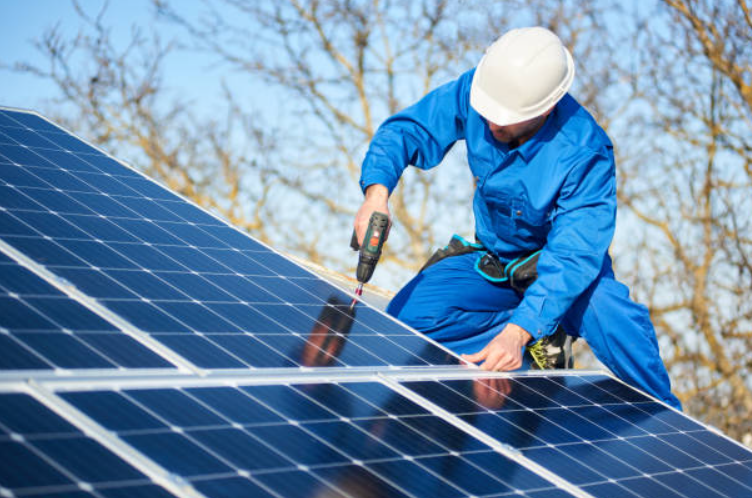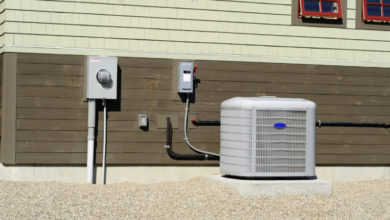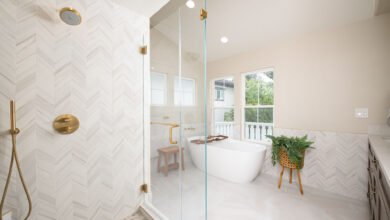What Is a Hybrid Solar System?
A hybrid solar system (also called solar + storage or grid-interactive battery system) merges three elements: solar panels (PV modules), a battery storage system, and a grid connection. It combines the advantages of grid-tied and off-grid systems so you can draw from solar when available, store excess energy for later use, and lean on the grid when your battery is depleted or solar output is low. In effect, you get both cost savings and backup power capabilities.
Unlike a simple grid-tied system (which shuts down during a blackout) or a fully off-grid setup (which must rely entirely on storage), a hybrid system balances efficiency, resilience, and flexibility.
How Does a Hybrid Solar System Work?
Daytime Operation: Generation, Storage, Export
When the sun is shining, solar panels convert sunlight to DC electricity. The hybrid inverter (or power management system) directs that energy according to priorities:
1. Supply your immediate load (your appliances, lighting, etc.)
2. Charge the battery if there’s surplus
3. Export any remaining energy to the grid, if allowed
See also: How Metal Roofing Enhances Home Value and Curb Appeal
This flow maximizes solar self-consumption and reduces reliance on grid power.
Night or Low-Suntime: Battery Discharge, Grid Supplement
Once solar generation declines (after sunset or during cloudy conditions), the system switches to drawing from the battery. If battery capacity is insufficient, the system seamlessly uses grid electricity to ensure continuity.
Power Outage Response (Islanding Mode)
This is where the hybrid setup proves its worth. If the utility grid goes down, the inverter detects the disruption, disconnects safely from the grid, and powers critical loads from the battery and available solar input. In most systems, this switchover happens in milliseconds, so you hardly notice the transition.
Key Components of a Hybrid Solar System
Solar panels (PV modules): Commonly monocrystalline or bifacial types, selected for high efficiency.
Hybrid inverter / bidirectional inverter: Manages DC → AC conversion, controls battery charging/discharging, and synchronizes with the grid.
Battery storage + Battery Management System (BMS): Usually lithium-ion these days, with monitoring and protection features.
Charge controller & protection circuits: To regulate DC side, prevent overcharge or deep discharge.
Monitoring & energy management software: Offers real-time insight, smart scheduling, and peak shifting.
Grid interface / relay switches: To allow export and safe disconnection during outages.
Choosing the right mix depends on your consumption profile, required backup time, local grid policies, and budget.
Benefits of a Hybrid Solar System
1. Energy Security & Backup
With battery backup, you stay powered through blackouts or grid disturbances something grid-tied systems can’t offer.
2. Lower Electricity Bills & Peak Shaving
You use stored energy during expensive peak hours, reducing costly grid consumption. In places where net metering or feed-in policies are weak, this is especially valuable.
3. Increased Self-Use of Solar
Rather than sending excess power to the grid for little return, a hybrid system lets you keep more of what you produce.
4. Scalability & Flexibility
You can start with a modest battery and expand as needs grow. Many hybrid inverters support modular battery integration.
5. Environmental Benefits
By relying more on clean solar energy and less on fossil fuel–powered grid supply, you reduce your carbon footprint.
Challenges & Considerations
Higher upfront cost: Batteries and hybrid inverters raise the initial investment.
Complex design & installation: Requires careful sizing, integration, and protections.
Battery lifespan & replacement: Over time, battery capacity degrades and eventual replacement is needed.
Regulatory & incentive variability: The local grid policy (net metering, feed-in rates) impacts payback.
When Does a Hybrid Solar System Make the Most Sense?
In areas with frequent power outages or poor grid reliability
Where net metering is limited or unfavorable
For users with high evening or peak-hour usage
When you want future-proof flexibility to grow battery capacity as needs change
In many of these scenarios, a hybrid solar system delivers far more value than a standard grid-tied solar setup.
How Felicity Solar Designs Hybrid Systems
At Felicity Solar, we specialize in customized solar energy storage solutions. We don’t believe in one-size-fits-all packages. Instead:
We begin with a detailed energy audit of your site, consumption patterns, and goals.
We design the hybrid solar system around your priorities whether that’s maximal backup time, return on investment, or future expansion.
Our engineering team selects compatible, high-quality components and programs intelligent energy management controls.
We oversee complete installation, commissioning, monitoring setup, and ongoing support.
Summary & Call to Action
A hybrid solar system offers the best of both worlds: the cost savings of solar, and the resilience of battery backup. As grid instability and energy prices rise, this architecture becomes increasingly compelling — especially for those who want uninterrupted power without going fully off-grid.
At Felicity Solar, we deliver tailored hybrid solar + storage solutions backed by expert design, quality hardware, and ongoing support. If you’re exploring how a hybrid solar system can transform your energy future, let’s discuss your needs.
➡️ Contact us today via our website or request a consultation, and let Felicity Solar help you build a hybrid energy system that works for your home or business.




